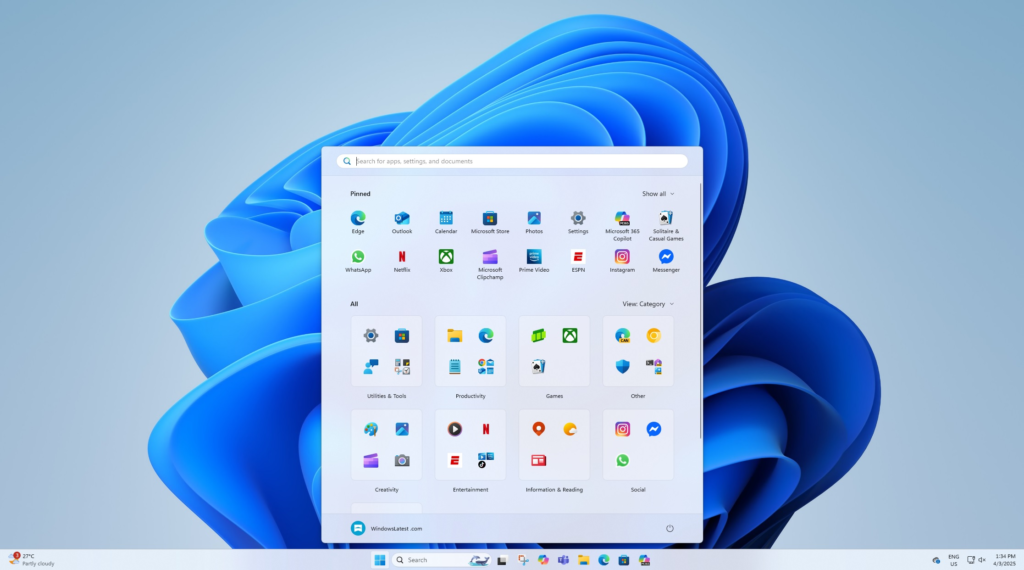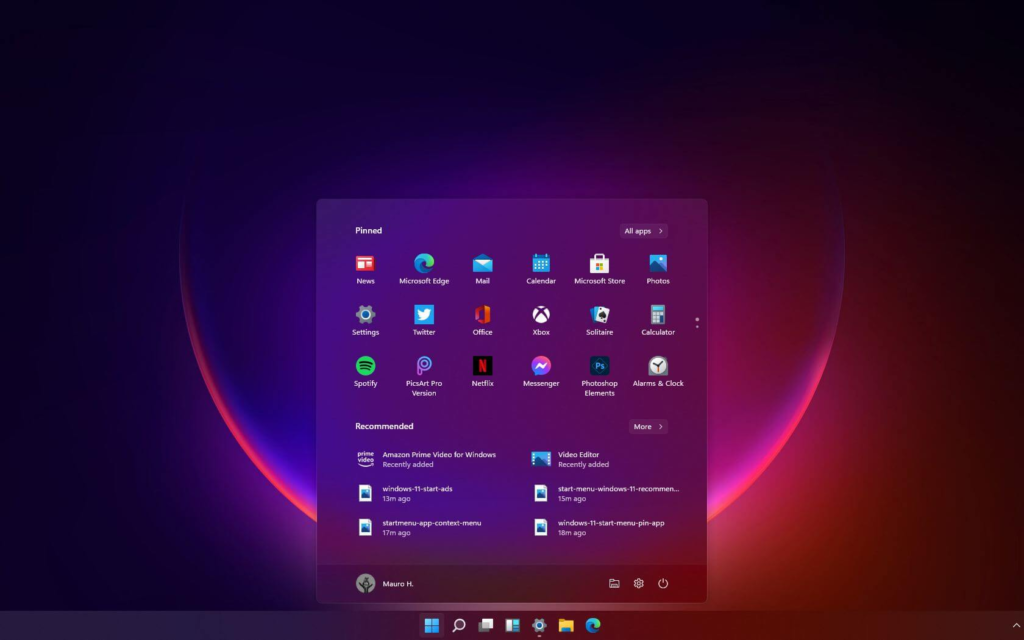Microsoft is rolling out big changes to the Windows 11 Start menu after years of complaints from users. The new design is bigger, easier to use, and finally lets you hide the annoying Recommended section. These updates aim to make Windows 11 feel less cluttered and more like the older Windows versions people loved.
The Start Menu Is Now Bigger and Easier to Use
The expanded Start menu provides an additional viewing area for your applications while being wider and extending higher. The interface maintains its structure on a single screen where everything remains present. Checking all pinned apps and installed apps and settings requires only vertical scrolling from the top to the bottom.
You can now pin up to eight apps in a single row, which is a big upgrade from the old limit of three rows. Users can view up to 24 apps simultaneously with the “Show all” button in the application launcher. The pinning feature provides instant access to Chrome, Word, Spotify, and more, among many other apps, through a user-friendly interface.

You Can Finally Hide the Recommended Section
The Recommended section at the bottom of the Start menu has been a headache for many users. It showed recent files and apps, which most people did not need to see every time they opened the menu. With the new update, you can completely turn this section off.
A simple toggle in the Settings menu removes the Recommended area. This frees up space for your apps and makes the Start menu look cleaner. Turning off recommendations also hides the Recent Files list in File Explorer, though Microsoft might change this later based on feedback.
Apps Now Get Sorted Into Folders Like on iPhone
How the New App Folders Work
The All Apps list now has three ways to organize your apps. You can choose a simple alphabetical list, a grid of icons, or folders that group apps by category. These folders, like “Productivity” or “Entertainment,” are created automatically by Windows. For example, the Calculator app might go into “Utilities,” while Netflix lands in “Entertainment.”
Apple’s iPhone App Library inspires this idea. While you cannot create your own folders yet, the automatic sorting helps you find apps faster. Some categories might not be perfect, but it’s a step toward a cleaner Start menu.
Connect Your Phone to the Start Menu
Microsoft added new features to connect your phone to Windows 11. If you link your Android or iPhone using the Phone Link app, you can see your phone’s battery level, recent messages, and photos right from the Start menu. A “Send files” button lets you quickly share documents between your computer and phone.
This makes it easier to work across devices without opening extra apps. However, the Start menu still does not let you control music or videos playing on your phone.
Customize the Start Menu Without Extra Apps
Before this update, many users downloaded apps like Start11 to personalize their Start menu. The new design reduces the need for these tools. Along with hiding recommendations, you can now move the Taskbar to the left (like Windows 10), resize icons, and add folders like Downloads or Documents to the Start menu’s bottom panel.
These changes show that Microsoft is listening to users who want more control over how their desktop looks and works.

When Will You Get the New Start Menu?
The new Start menu design can be experienced by Windows Insiders, which serve as Microsoft’s beta testing community. The redesign will reach all users in the next few months after beta testing with Microsoft Insiders. The update functions with all Windows 11 versions, from new to older iterations. The update arrives at the time Microsoft plans to cease Windows 10 support in 2025. Microsoft strives to promote Windows 10 upgrades through advanced improvements that deliver an enhanced familiar interface.
A More User-Friendly Windows
The latest Start menu update in Windows 11 solves major user dissatisfaction points. Microsoft adds flexibility to the operating system through features that allow users to hide unneeded sections while automatically organizing their applications. With these modifications, Microsoft has demonstrated its commitment to combining contemporary design with user-desired functionality, yet it remains imperfect.
This update shows that Microsoft monitors user feedback because it joins the tech competition to develop easier and smarter software. Windows 11 could transform into a system that users remember as home after this update for its numerous users.





